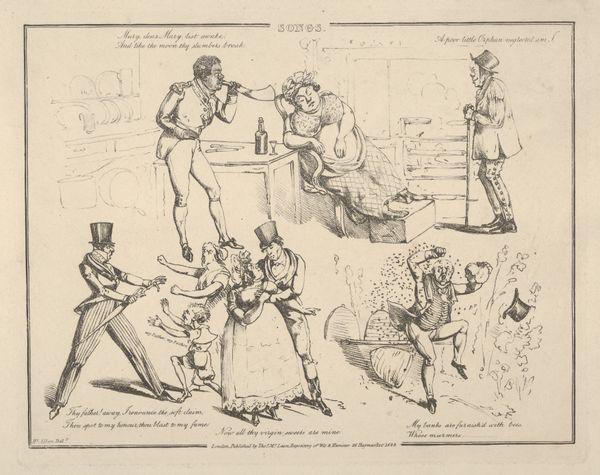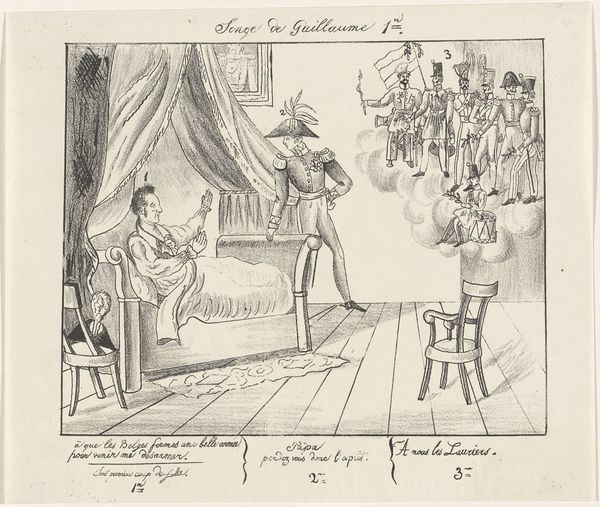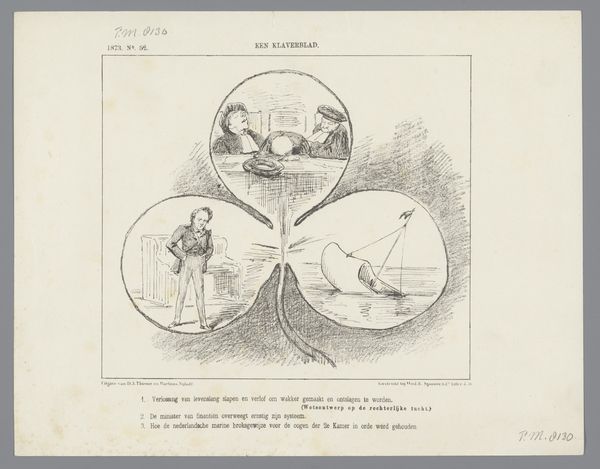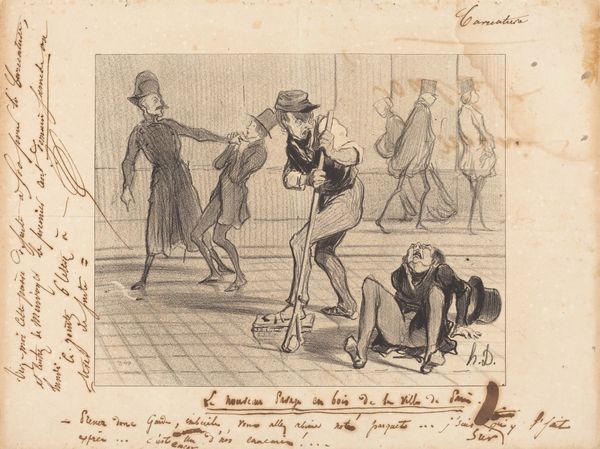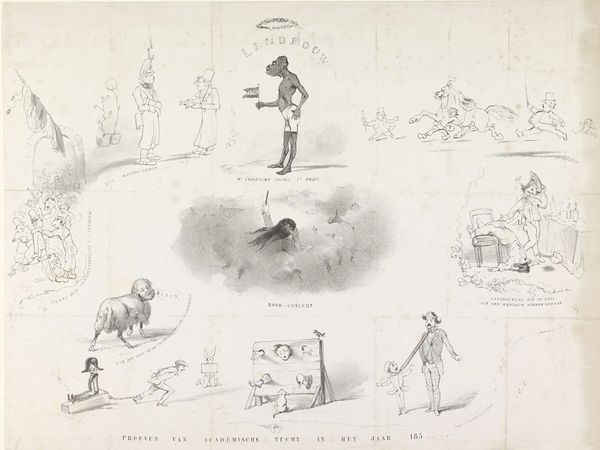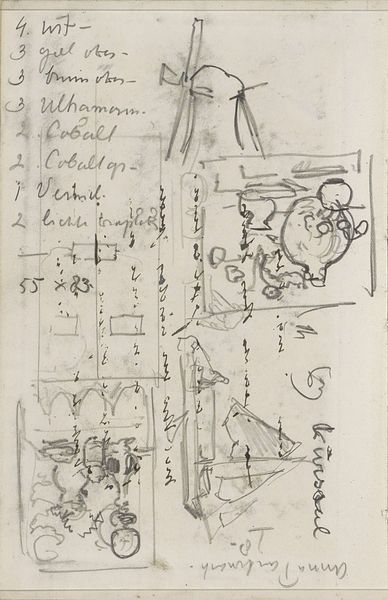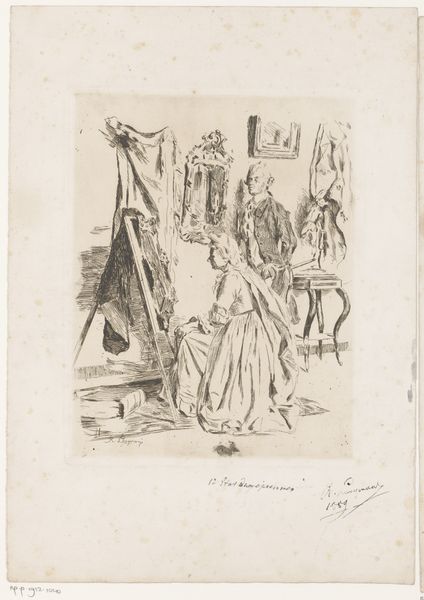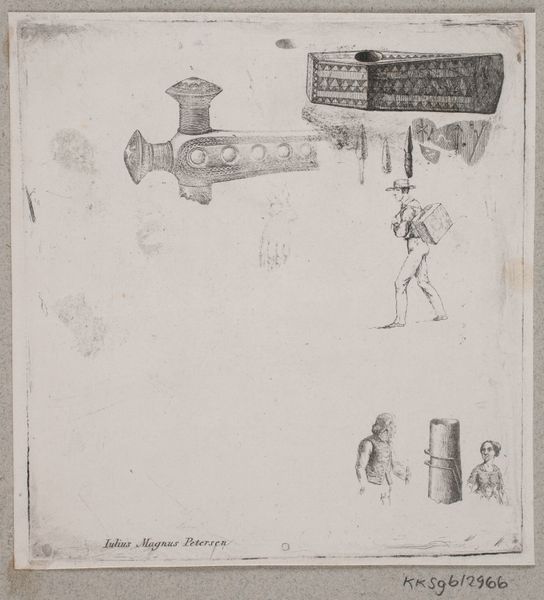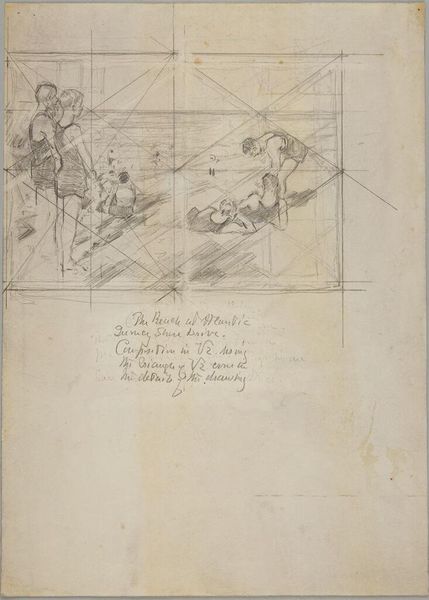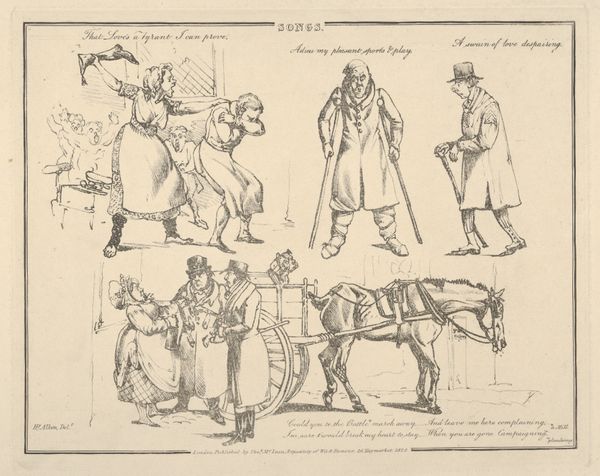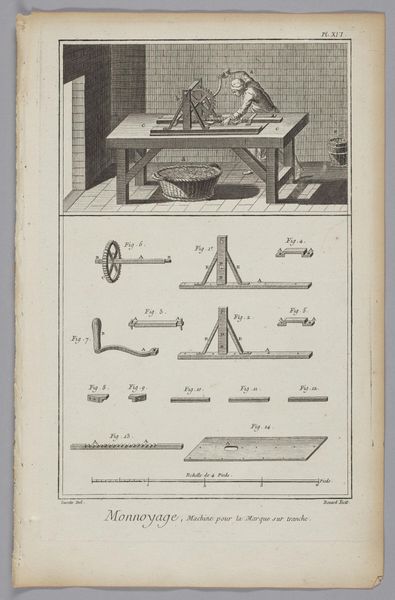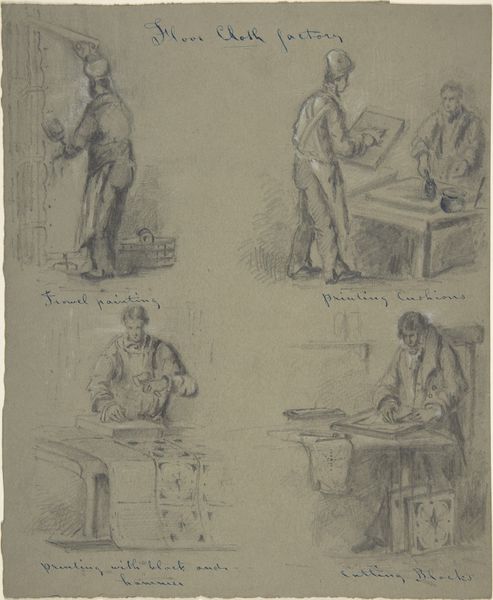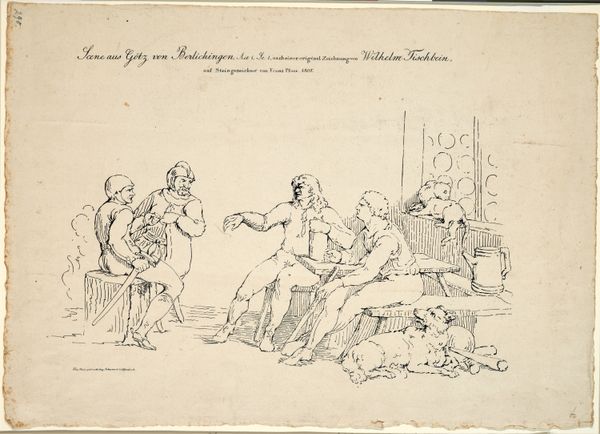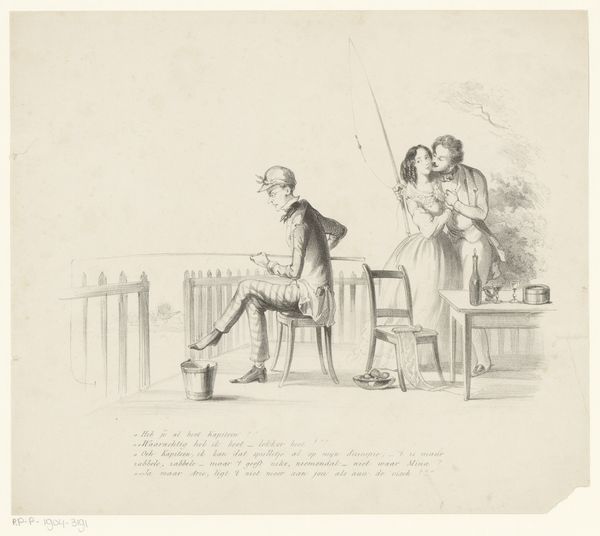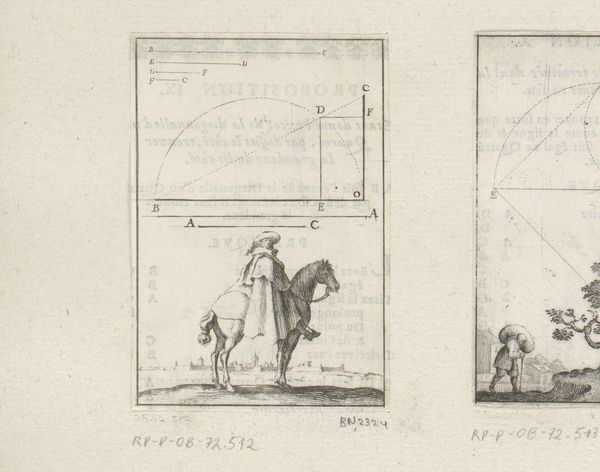
Spotprent op de verkiezingen voor de Staten-Generaal in augustus 1880 te Amsterdam 1880 - 1888
0:00
0:00
drawing, print, ink, pen
#
architectural sketch
#
drawing
#
quirky sketch
#
dutch-golden-age
# print
#
caricature
#
incomplete sketchy
#
personal sketchbook
#
ink
#
idea generation sketch
#
sketchwork
#
pen-ink sketch
#
sketchbook drawing
#
pen
#
history-painting
#
storyboard and sketchbook work
#
initial sketch
Dimensions: height 464 mm, width 375 mm
Copyright: Rijks Museum: Open Domain
Editor: So, this is a drawing from somewhere between 1880 and 1888 by Piet Hein Testas. It's called *Spotprent op de verkiezingen voor de Staten-Generaal in augustus 1880 te Amsterdam* which, if my Dutch serves me right, translates to "Cartoon on the elections for the States General in August 1880 in Amsterdam". The medium looks like ink and pen on paper. It strikes me as pretty busy and overtly satirical; almost like a political circus. What do you see in this piece? Curator: Well, I am immediately drawn to the symbols employed in this visual commentary. We see figures quite literally hanging upside down, striving for balance on what appears to be a high bar. Tell me, what does that call to mind for you? Editor: Acrobats? A circus act, maybe? Like the parties are putting on a show? Curator: Precisely. Now look at the figures themselves. What are they holding, and what might that suggest in the context of late 19th century Dutch politics? Each figure is laden with signifiers-- from flags and banners to literal props. This would resonate deeply with contemporary audiences familiar with political figures. These symbols, drawn from shared political discourse, form a shorthand; do you think that political cartoons remain this reliant on shared visual languages? Editor: I suppose so. We use memes, cultural references... it's a different medium, but the principle is the same: quick communication through familiar imagery. Curator: Indeed. Think about how the artist uses visual cues to immediately signal allegiance or opposition. The power of this imagery resides in the pre-existing cultural and political narratives of the time. Editor: So it’s like deciphering a visual code specific to that moment. It also really makes you think about how symbols evolve or stay relevant over time. Thanks for helping me unpack the symbolism! Curator: My pleasure! Examining symbols unlocks the emotional and cultural landscape of its time.
Comments
No comments
Be the first to comment and join the conversation on the ultimate creative platform.
